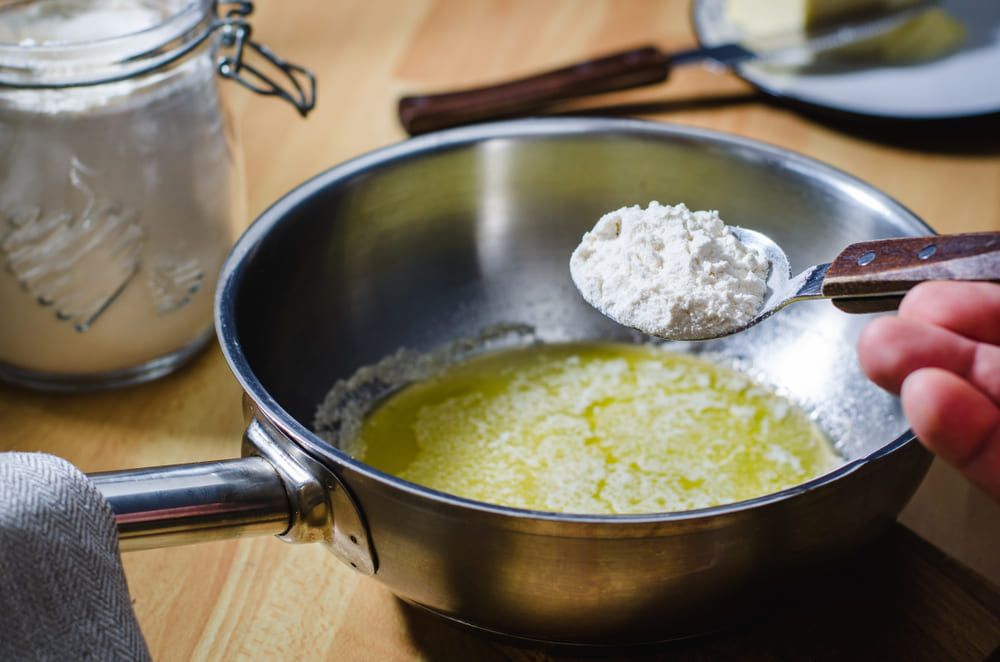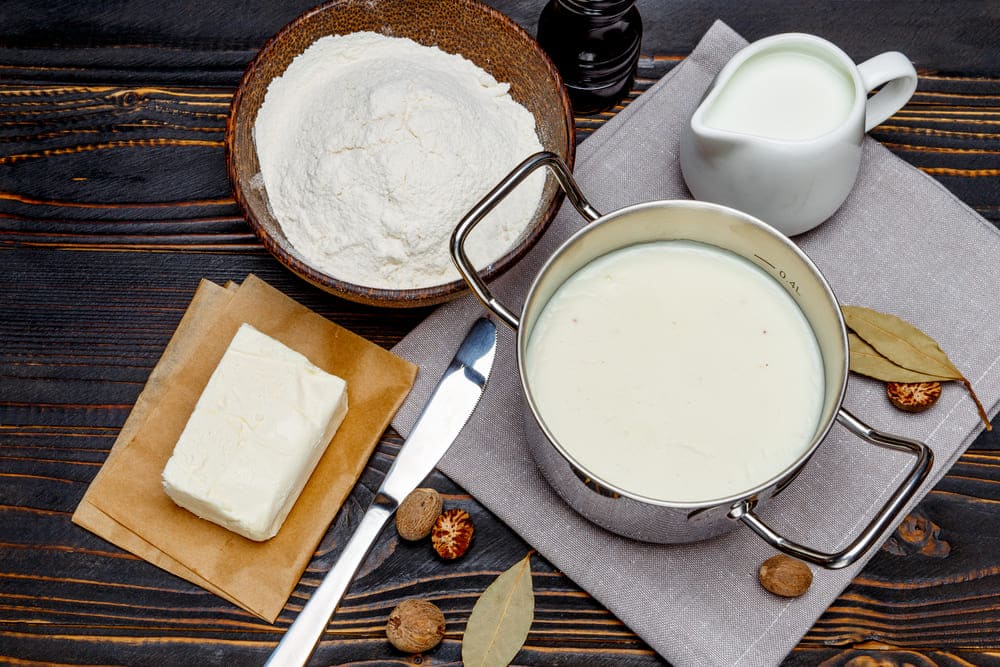
If you’ve been cooking for a long time, you would know that roux is an essential thickening ingredient for making sauces and gravies. A roux is defined as a mixture of cooked oil and flour which is used as the thickening agent for soup, stews, gravy, and sauces.
Any form of oil can be used such as sunflower, canola, olive, margarine, or butter. Usually, people use butter rather than liquid oils for a richer flavor. Different forms of flour can also be used. The most common are white wheat flour and cornstarch.
To make a roux, the oil and flour are stirred together over a gentle heat until they form a nutty brown paste. Small amounts of this roux are then whisked into hot stock to thicken it for the purposes of making gravy or sauce. The roux adds flavor as well as texture.
Today we are going to look at what the correct roux-to-stock ratio should be. How much roux is needed to thicken that stock without it becoming too thick and lumpy?
The Right Ratios
Let’s first look at the ratio of flour to fat for a roux. This should be 1:1. In other words, if you have one tablespoon of butter, you are going to mix it with one tablespoon of flour.
Types of Roux
The ratio of roux to stock will depend on the type of sauce you are making and the type of roux you are using. So let’s look at the three main types of roux.
1. White roux
This is made by cooking the flour and butter together for a very short time only. This is used in white sauces such as a bechamel sauce.
2. Blonde roux
This is made by cooking the flour and fat together for a little longer until a light golden color is achieved.
3. Brown roux
This roux is cooked for even longer, stirring constantly to prevent burning until a darker brownish color is obtained. It will have a toasted, nutty flavor and is used in dishes like gumbos.
4. Black roux
Only brave cooks use this one! It isn’t really black but is cooked until it’s a deep, rich brown.
To make the roux, simply heat the fat in a small pan first. When it is bubbling, whisk in the flour. Mix and stir until it is smooth and glossy with your desired color.
What Should The Roux To Stock Ratio Be?
There isn’t a set ratio because it depends on what type of sauce you are making and how thick you desire it to be. A thick sauce will need more roux in proportion to flour, while a thinner sauce will require more stock.
As a rule of thumb, if you are not using imperial measures, you can simply remember the numbers 3, 4, 5, and 6.
- For a thin, light sauce use 1 quart stock: 3 oz of roux
- For a medium-thickness sauce, use 1 quart stock: 4 oz roux
- For a thick sauce use 1 quart stock: 5 oz roux
- For a heavy sauce or gravy use 1 quart stock: 6 oz roux
If you are using imperial measures, the ratios are a little more difficult to remember.
- For a thin, light sauce use 1 liter stock: 85 g of roux
- For a medium-thickness sauce, use 1 liter stock: 113 g of roux
- For a thick sauce, use 1 liter of stock: 141 g of roux
- For a heavy sauce or gravy, use 1 liter of stock: 170 g of roux
Final Things To Keep In Mind
We hope this helps you with what the roux-to-stock ratio should be. Finally, for the perfect sauce, remember that the roux and the stock should be at different temperatures when whisking them together. So, if the roux is cold, add hot stock, and vice versa.
Cook them together for at least fifteen minutes to prevent any hint of raw flour. Use narrow, high-sided pans for sauce making rather than flat, shallow ones as this makes whisking easier.
Bon appetit!

